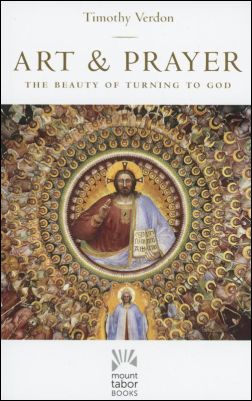 “Art & Prayer: The Beauty of Turning to God”
“Art & Prayer: The Beauty of Turning to God”
by Timothy Verdon.
Paraclete Press (Orleans, Massachusetts, 2014).
320 pp., $32.50.
Msgr. Timothy Verdon, author of “Art & Prayer,” presents great works of art capable of evoking creative responses to the divine.
The beauty of the works spurs the heart to praise God, as does the splendor found in nature. Images and architecture, he writes, can teach us and lead us to prayer as do the Scriptures, acting as “stimuli” to encounter God’s presence as a feast.
The author, academic director of the Mount Tabor Ecumenical Center for Art and Spirituality in Barga, Italy, sees art as expressing an incarnational view of the universe. He quotes St. John’s insight that, in Jesus Christ, “life was made visible … the image of the unseen God.”
Art is a manifestation of the Word, as is all of creation. A painting of the baptism of Christ, by Piero della Francesca, for example, presents prayer “both as an occasion of existential commitment and as the place of eternal identity.”
[hotblock]
Another example is a fresco by Masaccio, titled “Holy Trinity with Mary, John and Donors.” By showing no difference in size between the figures of the trinity, the saints and the earthly donors, the work indicates that the mystery of the Trinity includes humanity without hierarchical separation so that daily life opens onto the depths of God, precluding final separation even in death.
“The Angelus” by Millet depicts an agricultural couple in a French field stopping to pray when the bells sound. The color and composition fuse the two figures with the earth and sunlight, giving their prayer a sense of “cosmic communion, illuminating humble folk as sunset gilds the broad horizon.”
A Venetian altarpiece by Bellini displays “visual music” through the artist’s use of light. The effect shows Mary as “daughter of light, mother of light and bride of light.”
Examples of art in architecture include cathedrals, whose vast spaces demonstrate the universality of inclusion and welcome that God offers us. Msgr. Verdon comments that the securely built, imposing structures reflect the way the Christian community is to be bonded by love to truly be called a church, a house of God with boundless spaces for prayer.
The book highlights the influence of spiritual reading, reflected in multiple works, one of which depicts the Annunciation as a “surprise caused by a presence that she (Mary) recognized first in the text … then in her own heart.”
Several works show St. Jerome becoming a master of prayer through reading Scripture. One by Antonello da Messina, set in Jerome’s study, uses deep perspective, enabling the viewer to see things close at hand and those far away simultaneously in the manner of deep reflection.
A number of works reflect contemplative and mystical prayer, including Bernini’s “St. Teresa in Ecstasy.” Moretto da Brescia’s “Christ in the Desert” presents Jesus gazing dreamily as he contemplates the natural world, sensing in it the action of the same Spirit that is within himself.
Msgr. Verdon states that contemplation of “the face of God” is both our goal and our beginning as illustrated by Michelangelo’s Adam in the Sistine Chapel, who looks directly into the eyes of God as he is created.
Art is a gift that springs from life, and thus, according to the author, is a form of giving one’s life for others. A painting of St. Charles Borromeo by Daniele Crespi demonstrates how the saint learned from the contemplation of images to allow himself to be transformed into a “living icon of Christ.”
Msgr. Verdon provides extensive scriptural quotations and theological explanations to ground the subjects of the works and includes more than 100 full-color illustrations. The pieces chosen, inspired by prayer, inspire prayer in others.
***
Sister Mona, a Sister of St. Joseph of Carondelet, has taught English for many years in Los Angeles.
PREVIOUS: Madcap ‘Shaun the Sheep Movie’ is fun for the family
NEXT: British composer’s music chosen for official Year of Mercy hymn



Share this story